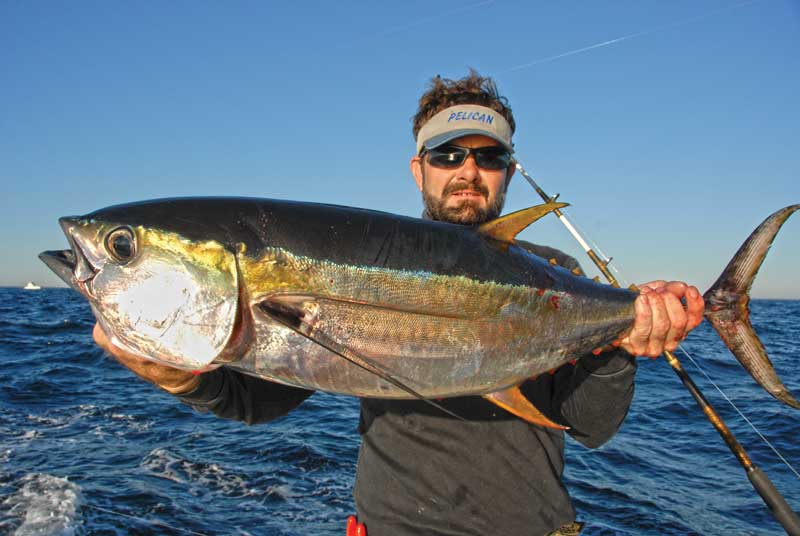June is tuna fishing month! It's the month when yellowfin and bluefin tuna come into the 20- and 30-Fathom lines and can be taken from reasonably small boats. I began fishing for them back in 1974 from my brother-in-law, the late Paul Coffin’s, 22 Mako. In those days the primary target was what we called football bluefins, and when you got on them, you could catch a box full in short order.

On our first trip we had some baits we had tied the night before, mostly ballyhoo and strip baits behind Sea Witches. I was talking to the mate on the Bluefin, a 31 Bertram, and he had some lures that looked like torpedo shaped pieces of wood. He said they were cedar plugs and bluefins ate them up. Paul thought the guy was pulling our leg. I went to the tackle shop at South Shore Marina and bought two from Barbra Porter that were already rigged.
The tuna had been caught close to the Delaware Lightship Buoy, and we put our lines out when it came in view. The tuna crashed those cedar plugs that were running tight to the transom right in the prop wash. We did catch a few on the ballyhoo and strip baits running on the outriggers, but the cedar plugs outfished them by a wide margin. I would never go tuna fishing without a few cedar plugs.
Today we seldom see football tuna, and if we did, we couldn’t keep one. Now it is yellowfins and much larger bluefins, and your boat must have a highly migratory species permit before you can even fish for tuna. These permits are available online from NOAA.
There are two techniques used to catch tunas during the season. The first is trolling and the second is chumming.
Trolling may not be as popular this year as it has been in the past. The price of fuel is going to be sky high, and just getting out there is going to cost a small fortune.
It is true that trolling does not use a great deal of fuel, so pulling tuna lures may not be as prohibitive as we think. Trolling also allows us to present our baits to a larger area where the fish may be holding.
You have probably guessed that I run cedar plugs on my flat lines and two smoker lures on the outriggers. The flat lines will have 30-pound class outfits and the outriggers will have 40-pound class rods and reels. The 30-pound reels will have 40-pound mono line and the 40-pound reels will have 50-pound mono line. The lures will have six or eight feet of 40- or 50-pound Fluorocarbon leader that will be tied to the running line through a ball bearing snap swivel.
Your trolling speed is the speed the water is moving past the hull and your lures, not the speed the boat is moving over the bottom. Your depth finder gives you your trolling speed; your GPS gives the speed you are moving over the bottom. I usually run at five to seven knots trolling speed when tuna fishing.
Chumming is the other technique for catching tuna. You will need a couple of flats or more of butterfish, bunker, or whatever the bait shop has. Then all that nice, oily, smelly, bait has to be cut into chunks. There are machines that make the job easier, but it still isn’t any fun.
You want to be on site as early as possible. Look around for bait or tuna and if you find either or both, set up ahead of them and begin to chunk.
If you don’t find any signs of life, set up on an edge so your chunks flow down into deeper water and hope. The Elephant Trunk, 20-Fathom Fingers, Massey’s Canyon, and Hot Dog are just a few of the areas that can produce tuna.
Chunk lightly and use a nice piece of bait on your circle hook. Make sure the bait rests at the bottom of the hook and does not block the barb. Pull line off the reel so there is a bit of slack on the surface of the water. When a tuna takes the bait, let him have it for a bit; then engage the reel and the fish will be hooked. All you have to do is hold on and crank.
By Eric Burnley